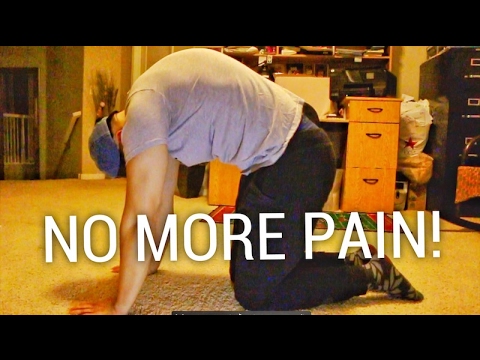Kyphosis is curvature of the spine that causes the top of the back to appear more rounded than normal.
Everyone has some degree of curvature in their spine. However, a curve of more than 45 degrees is considered excessive.
Sometimes kyphosis doesn’t cause any symptoms other than the back appearing abnormally curved or hunched. However, in some cases the condition causes:
back pain and stiffness
tenderness of the spine
tiredness
Back pain can be particularly problematic in adults with kyphosis because the body has to compensate for the spinal abnormality.
If you have severe kyphosis, your symptoms may get worse over time. You may also have difficulty breathing and eating.
What causes kyphosis?
In kyphosis, the normal curve in the middle section of vertebral column (the thoracic vertebrae) is more curved than normal. There are a number of reasons why this might happen, including:
poor posture (postural kyphosis) – slouching, leaning back in chairs and carrying heavy bags can stretch supporting muscles and ligaments, which can increase spinal curvature
abnormally shaped vertebrae (Scheuermann’s kyphosis) – if the vertebrae don’t develop properly, they can end up being out of position
abnormal development of the spine in the womb (congenital kyphosis) – if something disrupts the spine’s normal development, two or more vertebrae sometimes fuse together
age – as people get older, their spinal curvature can be expected to increase
Kyphosis can also develop as a result of a spinal injury.
Read more about the causes of kyphosis.
Treating kyphosis
If you have kyphosis, your treatment depends on how curved your spine is, whether you have any additional symptoms such as back pain, and the underlying causes.
Children with kyphosis may be able to be treated using non-surgical methods, such as bracing, to limit the progression of kyphosis as they grow. Treatment for mild kyphosis may not be necessary.
Kyphosis rarely requires surgical treatment. It’s only needed in some severe cases to correct the curvature of the spine.
Read more about treating kyphosis.
Emotional issues
Older children with kyphosis may become concerned or embarrassed about the effect the condition has on their appearance, or having to wear a back brace.
These concerns can affect different children in different ways. Some children can become socially withdrawn and they may be reluctant to take part in activities, such as PE, where their condition may be exposed.
There are no easy answers to these problems, but it can sometimes help to reassure your child that their feelings will improve with time.
Complications
Complications of kyphosis usually only occur in more severe cases. They include:
persistent pain that can’t be controlled with medication
breathing difficulties caused by the spine compressing the lungs and airways
Occasionally, people with kyphosis can have difficulties when the nerves running through the spine become compressed or pinched. This can disrupt nerve signals and cause symptoms such as:
numbness or weakness in the arms and legs
problems with sense of balance
loss of normal bladder or bowel control
These serious complications require urgent medical attention and surgery would usually be recommended.
Can kyphosis be prevented?
Postural kyphosis can be prevented by being aware of your posture and by taking care of your back. You should encourage your child to:
avoid slouching
sit correctly – sit upright, ensuring that the small of the back is supported
avoid carrying heavy schoolbags that can pull on the back muscles and ligaments; the best schoolbags are well-designed backpacks
take regular exercise (see below) to help strengthen the back and keep it flexible; activities such as swimming, running, walking, yoga and pilates are ideal for helping to prevent back problems
